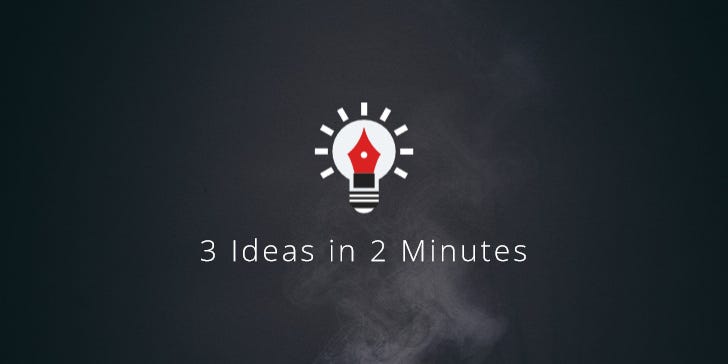#203: PESTLE, SPIT & the SExI Method
3 Ideas in 2 Minutes on Structured Business Writing
I. PESTLE
A common challenge for strategic and creative business writing tasks is the generation of ideas. PESTLE is a simple tool for analysing the external factors that could impact a situation or decision:
Political: What government policies or political issues affect the issue?
Economic: How do market trends play a role?
Social: Are there any cultural or societal trends people should be aware of?
Technological: What innovations or tech implications should you consider?
Legal: How do laws and regulations affect the topic?
Environmental: Are there ecological or sustainability concerns?
Whether you’re planning on launching a new product or you need to assess the risk a volcanic eruption poses to your private jet business. PESTLE can function as a template structure or a checklist. To understand the broader context and make sure that all external factors impacting the decision or situation have been considered.
II. SPIT
This inappropriately named business writing acronym is meant to increase your chances of getting a reply to your emails. Here’s how to SPIT your correspondence:
Set the Tone: Begin your message with a suitable style that makes the reader want to read on. This can range from formal to casual, depending on the context. (e.g. “Thanks so much, Bob, you’re a legend!”)
Make your Point: Don’t start with a pointless meandering story, follow the SWYP principle and state the purpose of your message upfront (e.g. “I’d love to discuss your writing tools in person.”)
Give Info: Now that the recipient knows what this is about, elaborate and give details relevant to the purpose of your message. (e.g. “Because I’m pretty sure we’ll be able to come up with even more inappropriate acronyms.”)
Take this Action: End with a clear call to action. What do you want the reader to do next? (e.g. “Let me know if you can meet Tuesday, 4am.”)
III. SExI Method
Not sure how to build a proper argument? The SExI Method can help.
State: Make your claim. (e.g. “Acronyms are useful mnemonic aids.”)
Explain: Clarify your claim further and give reasons why it’s true. (e.g. “Because they simplify complex information into easy-to-remember abbreviations.”)
Illustrate: Provide evidence and/or give examples. (e.g. “The acronym SExI, for example, helps you remember to State, Explain and Illustrate your points.”)
Optionally, you can add an additional ‘I’ for Important. This is the So What?; your opportunity to round off your point by summing up why it all matters.
The SExI Method is also a handy tool to break down someone else’s argument. What is their claim? What explanation do they give? What illustration or evidence do they provide?
👉 If you’re new and haven’t read it yet, I have more writing tips for you in How to Get Better at Writing in 7+1 Steps.🐘
Have a great week,
Chris
themindcollection.com

